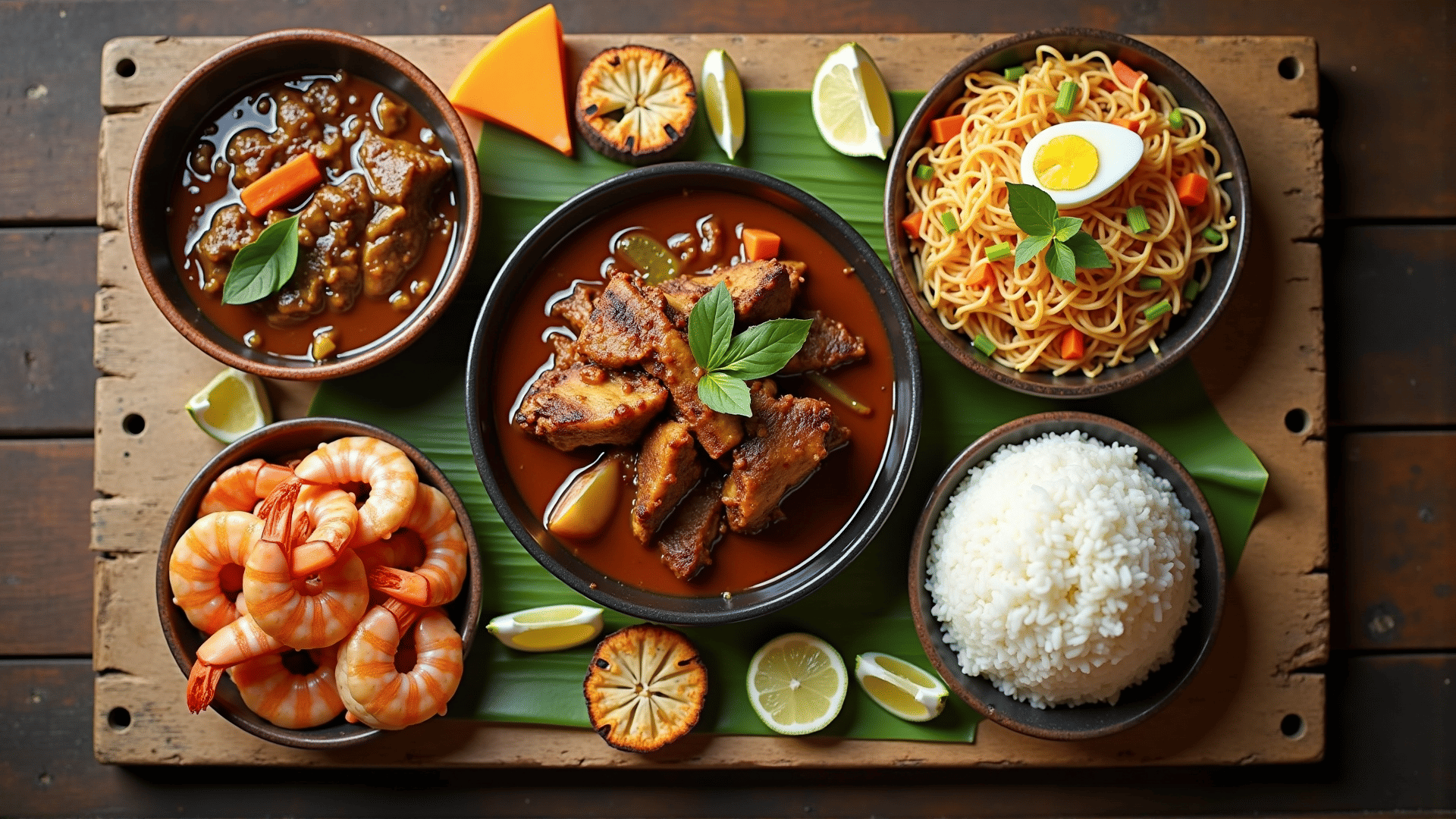Embark on a delectable adventure through the vibrant world of Filipino cuisine, where each dish tells a story of the nation's diverse heritage. The culinary tradition of the Philippines is a fascinating tapestry woven from centuries of cultural exchanges and regional influences, making it a delightful experience for the palate.
At the heart of Filipino cuisine is an abundance of fresh ingredients sourced from the abundant landscapes of the islands. From the bustling markets filled with exotic fruits and vegetables to the pristine coastal waters brimming with seafood, the bounty of the archipelago is reflected in the vibrant dishes served across the country.
One iconic dish is adobo, a savory stew that embodies the complex flavors of Philippine cooking. Typically made with chicken or pork, this dish is simmered in a marinade of soy sauce, vinegar, garlic, and spices, offering a perfect balance of salty, sour, and savory notes. As it simmers gently, the aroma of adobo fills the kitchen, inviting families and friends to gather around the table.
Another beloved classic is sinigang, a tangy and comforting soup known for its appetizing sour broth made from tamarind or other sour fruits. This versatile dish can be crafted with various proteins, such as shrimp, fish, or pork, and is often accompanied by an array of vegetables. The refreshing tartness of sinigang makes it a staple in the Filipino dining experience.
No exploration of Filipino cuisine would be complete without experiencing lechon, a celebration delicacy that graces festive occasions. The sight of a whole roasted pig, with its crispy skin and tender meat, is a testament to the meticulous preparation and slow roasting process that brings out its delectable richness.
The Philippines’ sweet side shines bright with desserts like halo-halo, a kaleidoscope of flavors and textures. This delightful treat combines sweetened fruits, jellies, beans, shaved ice, and leche flan, all drizzled with evaporated milk. Each spoonful offers a burst of sugary delight, making it a perfect way to cool down on a hot day.
Exploring the regional variations of these dishes adds another layer of intrigue. Different areas boast their own takes on these classics, incorporating local ingredients and techniques. From the fiery Bicol Express of the Bicol region, enriched with coconut milk and chili peppers, to the Ilocos region’s garlicky longganisa sausages, each area offers its distinct flavor profile that highlights the diversity of the islands.
Filipino cuisine is more than just sustenance; it is a reflection of the nation's soul and identity. It tells the tales of its history, influenced by Malay, Chinese, Spanish, and American culinary traditions. Sharing a meal becomes a conduit for connection, whether among family members at home or new friends at a fiesta.
While new trends and fusion dishes continue to emerge, the heart of Filipino cooking remains the same: a deep respect for tradition combined with a welcoming spirit that invites everyone to partake in its culinary treasures. The flavors of the Philippines are not just to be tasted; they are to be savored, understood, and cherished as part of an unforgettable journey.
